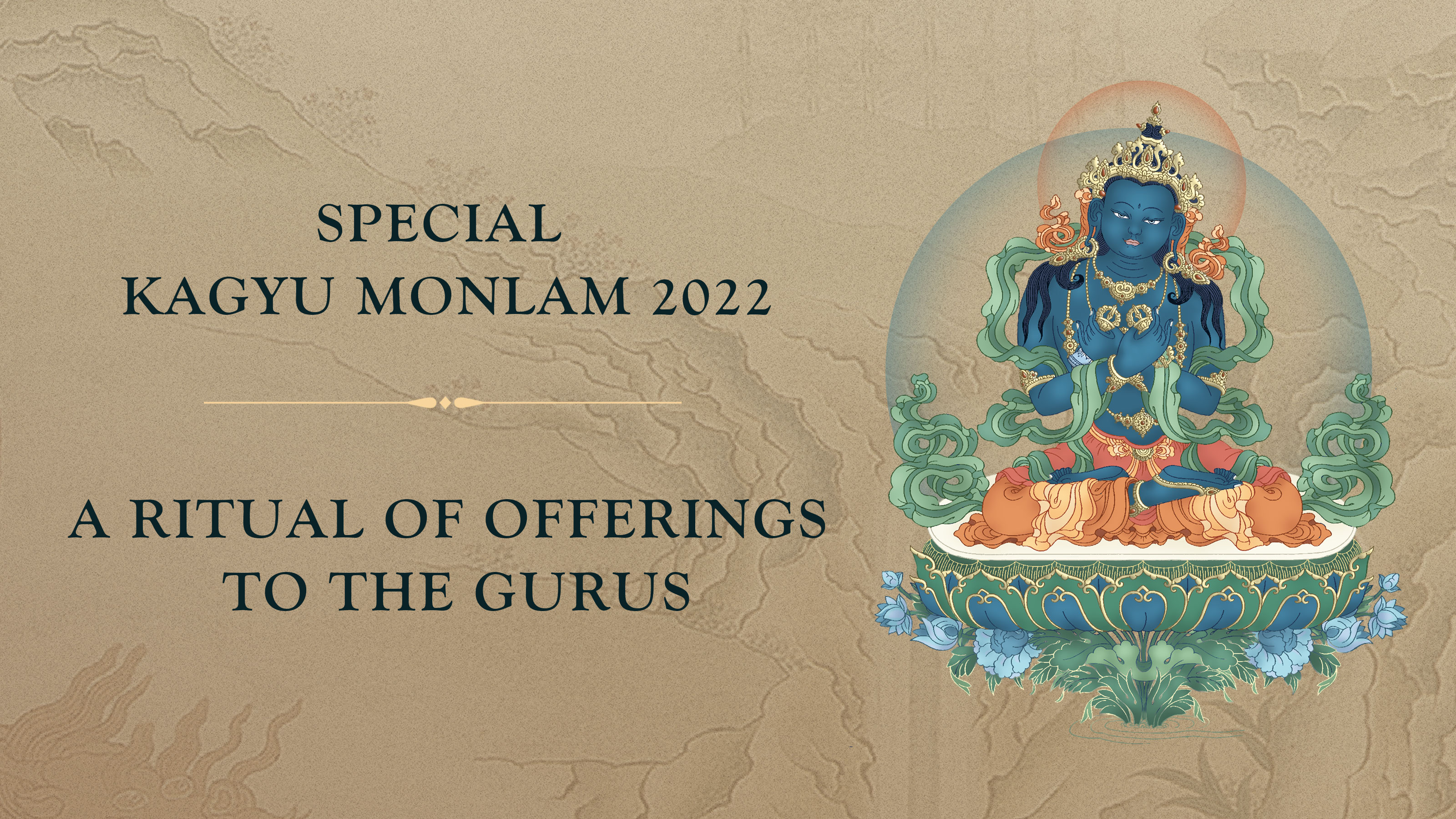16 February 2022
The Lama Chöpa
This extensive Ritual of Offerings to the Gurus is always performed on the last day of the Kagyu Monlam Chenmo, as a celebration or commemoration of Lamas who have given great service to the Buddhist teachings. Composed by the 17th Karmapa in 2005, it is a compilation drawn from many famous Buddhist texts
The puja often serves as a memorial to a particular Lama or Lamas who have recently passed away, and this year it was dedicated to the memory of two international Buddhist teachers, both of whom had passed away in 2022.
The first was the Vietnamese monk and world Buddhist leader, the Venerable Thich Nhat Hanh. During the Vietnam War, he coined the phrase “engaged Buddhism”– a form of Buddhism which combines Buddhist meditation practice with actively working for the good of society. He was responsible for introducing ‘mindfulness’ to the West. He adapted traditional Buddhist practices such as walking meditation, sitting meditation, eating meditation, deep relaxation, working meditation and breathing mindfully so that they were more easily accessible and could be applied to the challenges of modern life. He established a modern code of ethics for daily life known as “The Five Mindfulness Trainings” which are based on the traditional Buddhist five precepts. He dedicated his life to the work of inner transformation for the benefit of individuals and society, travelling worldwide to spread the message of mindfulness, peace and living harmoniously.
In 1982, he founded “Plum Village” in the south west of France, which is now the West’s largest and most active Buddhist monastery and grew into the International Plum Village Community. He also founded an organisation to teach mindfulness in schools with over 700 monastics and 11 monasteries. He died earlier this year aged 95.
The second Lama to be commemorated was the Nyingma lama, His Holiness the 4th Dodrupchen Rinpoche, Jigme Thubten Trinley Palzangpo. Dodrupchen Rinpoche was a great Dzogchen master and the principal holder of the Longchen Nyingthik teachings. He was one of the most significant contemporary teachers in the Nyingma and Dzogchen lineages. Rinpoche was born in Tibet in 1927 but, like many Tibetan religious leaders, he was forced to flee Tibet in 1957. In exile, he made his home in Gangtok, Sikkim and founded monasteries in Bhutan, India and Nepal, including Chorten Monastery in Sikkim. Rinpoche gave many empowerments, transmissions and teachings in Sikkim. He also subsidised the printing of many important Buddhist practice texts, including Longchenpa’s Seven Treasures and Trilogy of Finding Comfort and Ease. He travelled to the West, to North America and Europe, especially the UK and France, leading retreats and giving teachings and empowerments. In the USA, he established the Mahasiddha Nyingmapa Dharma Centre in Massachusetts. He was 95 when he died.
As the 17th Gyalwang Karmapa explained in 2020, this puja is particularly significant because in Buddhist practice the lama is of central importance:
If we can supplicate the gurus without forgetting, practice their instructions without forgetting, and benefit other sentient beings without forgetting, we will fulfill the gurus’ aspirations. We ourselves awaken to buddhahood by doing this and repay the kindness of sentient beings by doing this.



































